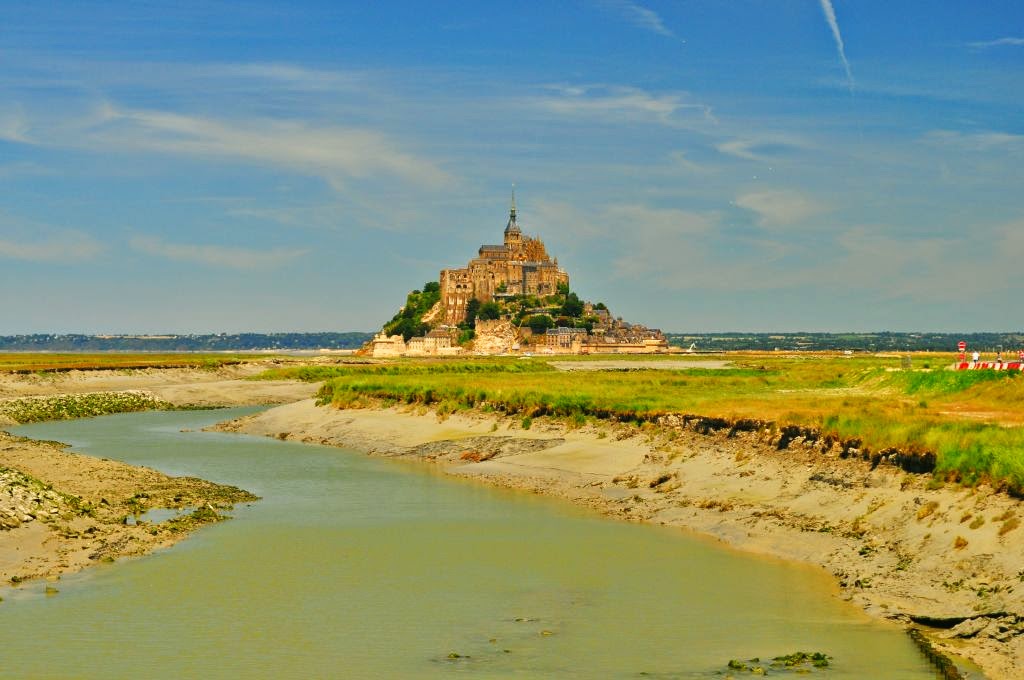Cathedral at Bayeux, dating from the 13th
century
Up early again after spending the night in the
historic city of Caen, we hit the road for Bayeux, where there is a great
cathedral which for many years held a 220-foot-long tapestry created around
1,000 years ago. The cathedral is
awe-inspiring, and the tapestry tells the tale of the Norman conquest of
England by Caen’s most famous resident in 1066 (more about that tomorrow).
We spent an hour here, with the entire length of the tapestry with its
58 separate scenes explained to us by little electronic boxes held next to our
ears. Since we will be en route to
Provence most of tomorrow, we will save the tale of this resident for our next
report. Bayeux, by the way, was the
first city liberated by the Allies after the D-Day invasion.
Mont St.-Michele from the mainland
A
couple of hours’ drive from Bayeux we visited one of
the most recognizable landmarks in France, Mont St.-Michele, an island commune
in Normandy. With a population less than 50, it has played many roles in the
history of the country with its fortifications dating from ancient times and its
huge monastery. It was once about 2,000 feet from the mainland, and
could be reached by foot only during low tide. So although it’s difficult to
imagine why it would have strategic value, in feudal times it was absolutely
necessary to build huge defensible forts so enemies would have something to
attack. This protected most of the country people, who could go about their
business while invaders concentrated their attention on these huge forts. If
you couldn’t have a fort, after all, what use would you have of the rest of the
countryside?
A closer view
Anyway, after the Franks took over the place in the seventh century, the story
is told that the Archangel Michael appeared to St. Aubert, the local bishop,
and commanded him to build a church here. Aubert, apparently not being one to
follow orders from mere angels, repeatedly ignored the angel's instruction. But
after Michael burned a hole in the bishop's skull with his finger, Aubert
relented and built a monastery, which still stands. The record does not reflect
whether Michael healed the hole after the construction.
View through a monastery window
After climbing the 20,000 or so steps
to the highest levels of the monastery, we were rewarded with magnificent views
of the countryside. We made a full tour
of the place, which took several hours, after which one of us was rewarded with
one cone of ice cream. The flavor was
unrecognizable, both because the names of the flavors were all in French and
because the taste was unfamiliar.
Something like a mixture of horse manure and Clorox. Not that we have ever actually tasted Clorox,
mind you. We will exercise more care in the
future when choosing our flavors, as well as in choosing our ice cream stands.
Charlie
and Tricia
©2014




No comments:
Post a Comment